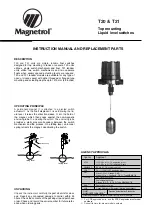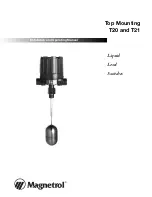
Supermicro SSE-F3548S/SSE-F3548SR Configuration User’s Guide
161
When a switch starts spanning tree it sends out BPDUs with its bridge ID as the root bridge ID. When a
switch receives the BDPUs, it compares the received root bridge ID with its own bridge ID. If the received
root bridge ID is lower than its own bridge ID, the received switch accepts the other switch as the root
switch. In case the received root bridge ID is higher than its own bridge ID, the received switch ignores the
received BPDU and continue to act as the root switch.
If the priorities of all switches are same, the switch MAC addresses decide the lowest bridge ID and hence
the switch with the lowest MAC address will be elected as the root switch.
6.2
Spanning Tree Support
Supermicro switches support STP, RSTP and MSTP protocols based on standards IEEE 802.1D 2004 and
802.1s.
6.3
Spanning TreeDefaults
Parameter
Default Value
Spanning tree global status
Enabled
Spanning tree port status
Enabled
Spanning tree mode
MST
Switch priority
32768
Port priority
128
Port cost
Port Speed
Default Path
Cost
10 Mbps
2000000
100 Mbps
200000
1 Gbps
20000
10 Gbps
2000
Hello time
2 seconds
Forwarding time
15 seconds
Maximum aging time
20 seconds
Transmit hold count
3
Max hops
20
Path cost method
Long
MST region name
Switch MAC address
MST region revision
0
Spanning tree compatibility
In MSTP mode, the default
compatibility is MSTP and in RSTP
mode the default compatibility is
RSTP
Root guard
Disabled
Topology change guard
Disabled
Port fast
Disabled
Auto edge
Enabled
Link type
Full duplex ports – point to point links
Half duplex ports – shared LAN links
















































